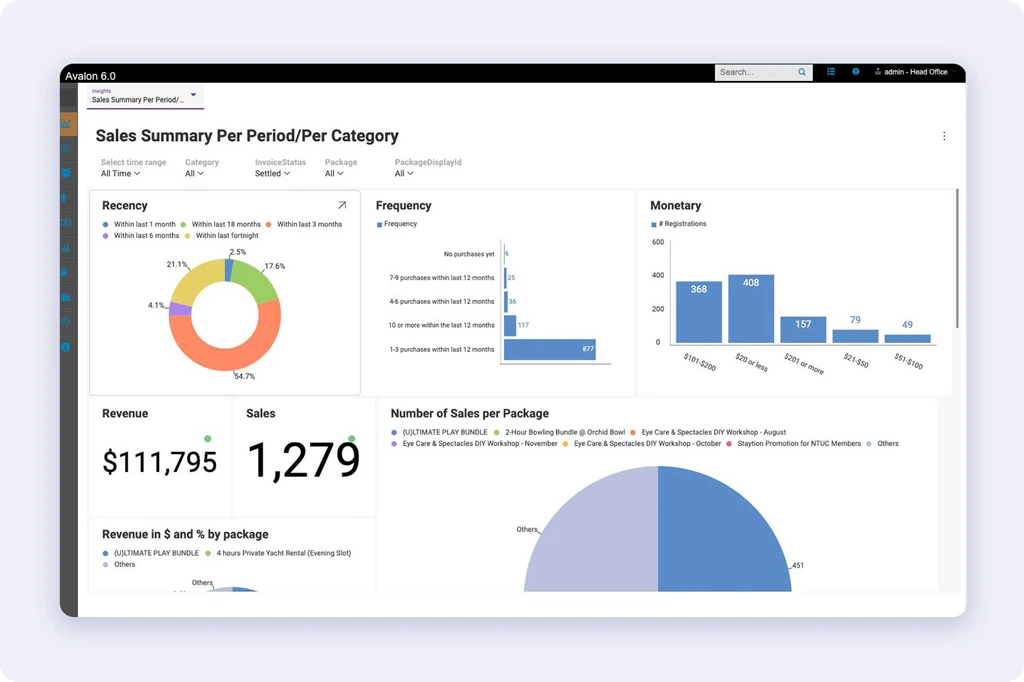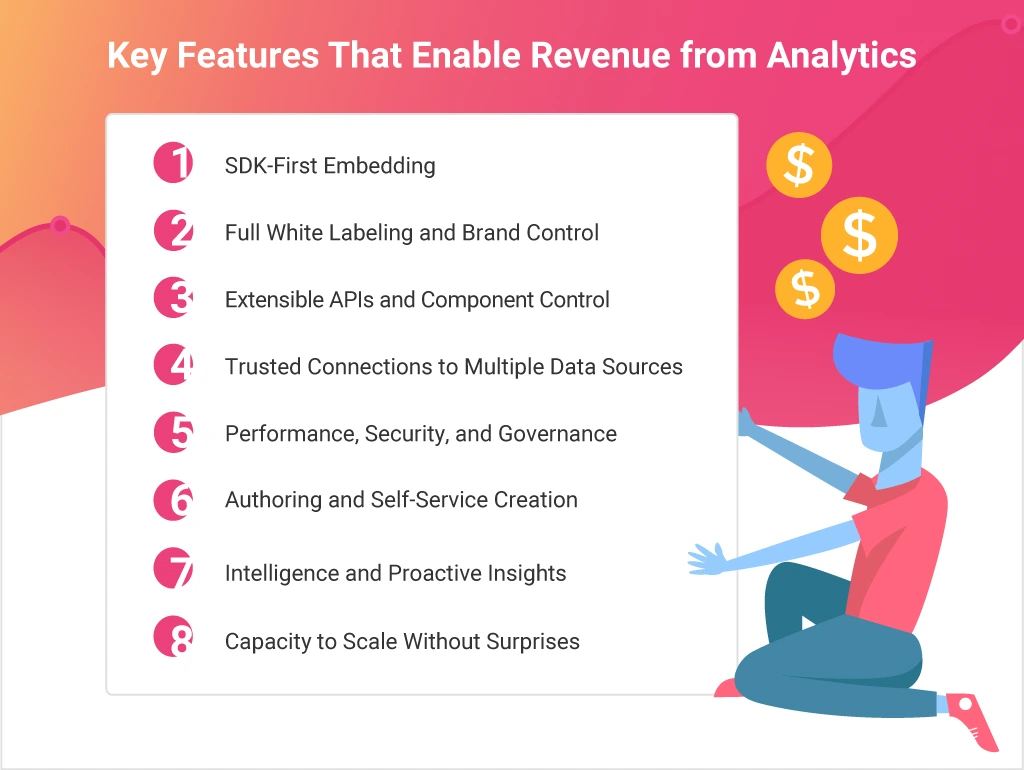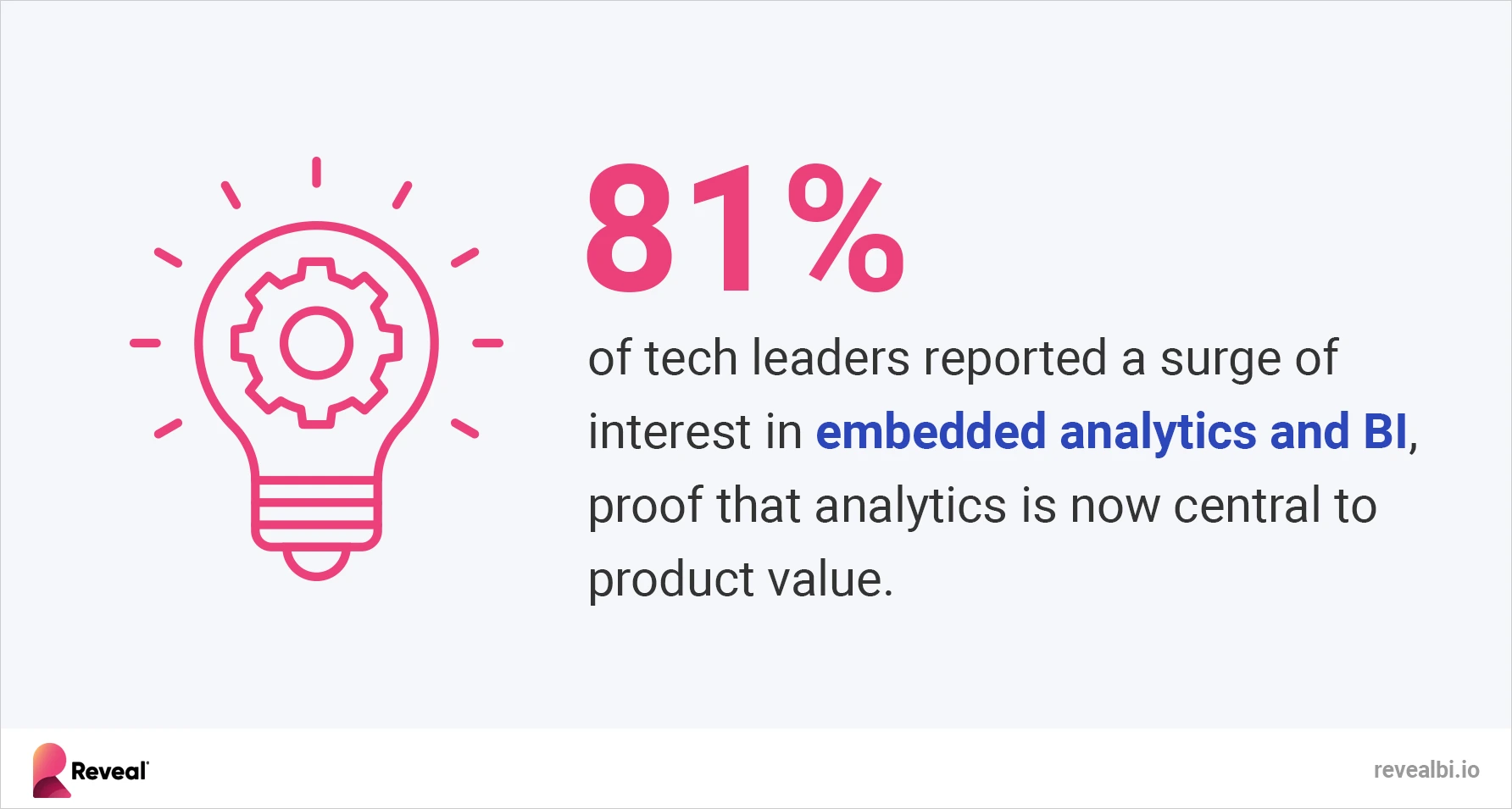
Scriptly Helps Pharmacies Identify Trends in Real Time with Reveal
SaaS leaders face pressure to differentiate, grow revenue, and keep customers engaged. Product analytics offers a direct path to do all three. By embedding insights into their products, companies can create premium feature tiers, sell analytics as add-ons, and increase retention through daily reliance. Customers now expect self-service, branded, and intelligent dashboards as part of the experience. Meeting these expectations requires SDK-first integration, white-labeling, scalable pricing, and trusted connections to data. Platforms like Reveal enable product teams to embed analytics inside the product, turning it from a cost center into a revenue engine.
Executive Summary:
Key Takeaways:
Too often, analytics is treated as a cost center. But product analytics can become one of the strongest revenue drivers in a SaaS business. In fact, 31.4% of organizations already use embedded analytics to generate higher revenue.
When insights are packaged as customer-facing features, they create new pricing tiers, enhance customer retention, and provide competitive differentiation. The fastest way to achieve this shift is with embedded analytics. When dashboards, reports, and predictive features are integrated into the product, they stop being an add-on and start acting like a product capability that customers will pay for.
To understand this, we need to examine the primary ways SaaS providers convert embedded insights into revenue.
The clearest way to make analytics a growth driver is to treat it as a product, not a support function. Companies do this by creating new revenue streams through product analytics that customers see and value.
Analytics often anchors enterprise or pro-level plans. Dashboards, predictive models, and advanced exports become reasons to upgrade.
Some companies treat analytics as a module. Others measure it by roles or usage. In both cases, analytics becomes a measurable service.
Revenue also comes from retaining customers for longer periods. Analytics builds habits and makes products harder to replace.

Avion’s experience shows the impact. By embedding analytics instead of building it, they saved 12 months of development. That acceleration lets them release monetizable features sooner and reinvest resources into their core product.
Industry data confirms the value. Data and analytics at scale could create between $9.5 trillion and $15.4 trillion in annual value if embedded across products.
Revenue models create opportunity, but success depends on meeting customer expectations.
Customer expectations for analytics have changed. Static reports are no longer enough. Today, users see product analytics as part of the core experience, not a secondary feature.
First, they expect self-service. Business users want to explore data, apply filters, and build dashboards without waiting on engineering teams. Self-service BI reduces friction, lifts adoption, and lowers the load on developers.
Second, users expect seamless integration. Analytics should look and feel like the rest of the product; if dashboards appear bolted on, trust and usage drop. For SaaS leaders, this makes full UX control essential to the success of product analytics.
Finally, customers expect intelligence. Predictive insights and proactive recommendations are becoming normal. AI-powered analytics helps users act before issues escalate, turning dashboards into decision engines.
Demand is clear. In 2025, 81% of data analytics users rely on embedded analytics. This adoption proves that user expectations are already the baseline requirements for modern product analytics.
To meet these expectations, companies need features that connect capability to revenue impact.
Meeting expectations takes the right capabilities. The right stack turns product analytics into clear revenue, not overhead.

An SDK integrates analytics into your codebase. It avoids iFrames and external portals.
White-label analytics and full branding drive perceived value. Dashboards should complement your UI, not fight it.
APIs should expose events, state, and layout options. Teams need guardrails and freedom.
Customers must see all relevant data in one place. Trust follows coverage and freshness. Thus, your analytics solution must unify multiple data sources.
Speed, RLS, and tenant isolation protect the experience and the business.
Users need to build and adjust dashboards without tickets.
Prediction and anomaly detection raise the value of product analytics.
Growth should not break cost models or performance.
These capabilities turn embedded analytics into analytics as a service that customers pay for. They also support monetizing insights through tiers, add-ons, and expansion across more teams in data-driven products. Features explain the mechanics. Strategy explains the outsized business impact.
Legacy BI tools were designed for internal reporting, not for customer-facing monetization. They force users into separate portals, rely on iFrames, and demand heavy IT support. This model slows delivery and weakens adoption. The contrast between legacy vs. modern embedded analytics is clear. Modern approaches embed directly into the product, scale with customer growth, and open new paths to revenue.
The business case is strong. Embedded analytics sits inside workflows, drives adoption, and keeps users engaged. That makes it one of the most effective levers for retention. Many SaaS companies now view product analytics as an integral part of their pricing strategy, rather than a support feature. This explains why enterprise BI vs embedded analytics is a decisive choice for product leaders.
Avion’s experience shows the impact in practice. By adopting an SDK-first analytics platform, they cut 12 months of engineering work. Those time savings let them deliver features faster and freed resources for core product improvements. More importantly, it gave customers immediate access to branded, self-service dashboards. The result was stronger adoption, lower churn risk, and a product positioned for growth.

Market data backs this up. In 2024, 81% of tech leaders observed a rise in interest in BI and embedded analytics. Analysts also predict that by 2026, 80% of software vendors will embed GenAI into their products. These trends confirm that analytics is no longer limited to back-office reporting. It is a capability that shapes the business model of modern data-driven products.
The payoff is direct and indirect revenue. Premium features and add-ons generate ARR, while customer retention with embedded analytics extends lifetime value. For SaaS leaders, this proves why product analytics is more than a dashboard. It is a revenue driver. For customers, product analytics create tangible value that strengthens loyalty.
Embedded analytics proves its worth as a revenue stream. The next question is which platform can deliver these outcomes without slowing your roadmap.
Turning analytics into revenue requires a platform built for product teams, not just IT. Reveal enables SaaS leaders to treat product analytics as a product capability, supporting monetization, retention, and scale.
Here’s how Reveal delivers value:
Reveal embeds natively into your codebase. No iFrames, no portals. This gives full control over UX and performance. Faster time-to-market means new monetizable features reach customers sooner.
With white-label analytics, every dashboard and chart matches your brand. Enterprise customers expect this level of polish, and it supports premium-tier pricing.
Reveal integrates with a wide range of data sources. That means customers trust the insights because they see the full picture in one place. Trust drives adoption and retention.
Reveal avoids per-user charges. Flat, transparent pricing means analytics scales with your product, not your costs. This supports healthy margins and lets you package analytics as a service.
Backed by 30+ years in developer tools, Reveal offers support, documentation, and expertise to help teams deliver analytics without slowing their roadmap.
These strengths allow SaaS providers to design truly data-driven products. Instead of analytics being an afterthought, it becomes a core capability that generates revenue and strengthens customer loyalty.
Back to Top